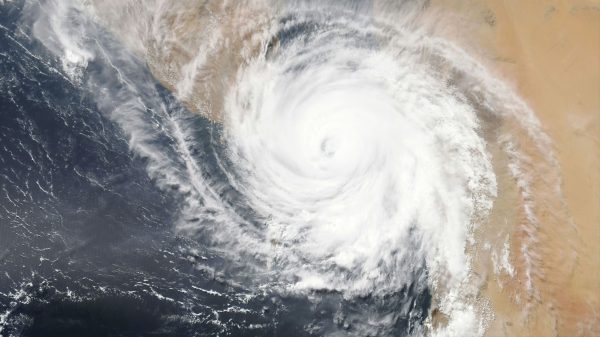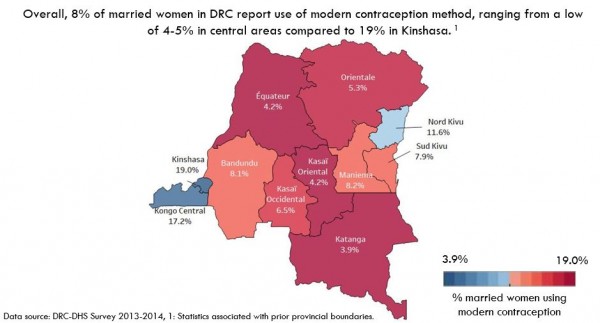
Climate change impacts are contributing to increasing frequency and severity of extreme weather events, which disproportionately affect already vulnerable populations living in fragile and conflict settings. These populations experience multiple interconnected crises related to climate change - displacement/migration, loss of livelihoods, environmental degradation, and public health outbreaks. While some emergencies, such as Typhoon Haiyan in the Philippines and Cyclone Phailin in India in 2013, gain widespread media coverage, many others are poorly publicized and receive little public attention. There are also slow-onset emergencies, such as food crises due to drought, that require a little type of understanding and intervention. The Emergency Response Team at the Bill & Melinda Gates Foundation seeks to better understand the specific impacts of climate change on public health crises and humanitarian emergencies, and to identify evidence-based strategic recommendations to improve preparedness & response for this new normal.
The START Center team first conducted a scoping review of peer-reviewed and grey literature of all climate events and associated public health outcomes in nine low- and middle-income countries, including Pakistan, Bangladesh, Haiti, Mali, Burkina Faso, Niger, Ethiopia, Somalia, and the Democratic Republic of the Congo. These findings were then used to narrow the research focus on: 1) hurricanes & infectious diseases in Haiti; 2) drought & malnutrition in Ethiopia; and 3) flooding & infectious diseases in Pakistan.
Key Country-Level Takeaways
Haiti
● About 96% of Haiti’s population is exposed to natural hazards including hurricanes, floods, and earthquakes. Haiti’s climate and socioeconomic vulnerabilities result in high population risk of infectious disease outbreaks following cascades of disasters.
● Limited adaptive strategies were discussed in peer-reviewed literature. The most well-documented adaptations were storm early warning systems and cholera outbreak tracking methodologies, however, implementation gaps for these strategies remain.
● Prioritizing construction of climate-resilient health infrastructure and roads is necessary to mitigate population risk of infectious diseases following extreme weather events such as hurricanes.
● There are clear implementation gaps for strategies addressing population vulnerabilities and exposures to hurricanes and infectious disease outbreaks, in particular scaling evidence-based interventions.
Ethiopia
● Ethiopia faces a severe threat from drought, which leads to food and water insecurity and has a dire impact on public health, specifically malnutrition among children and vulnerable populations.
● The research findings indicate that by integrating early warning systems for drought and malnutrition, along with climate-resilient agricultural practices, Ethiopia can significantly mitigate the adverse effects of these climate events.
● Social safety nets such as cash transfers, food fortification with essential micronutrients, and therapeutic feeding programs are identified as effective measures for addressing acute malnutrition in drought-stricken areas.
● Despite these strategies, there are gaps in implementation, especially in expanding the reach of these programs and ensuring their integration with other drought resilience strategies.
Pakistan
● Pakistan is highly susceptible to flooding, which is exacerbated by monsoon rains and glacial melts, leading to a heightened prevalence of infectious diseases.
● Strengthening flood early warning systems, enhancing the healthcare system's capacity, and investing in water, sanitation, and hygiene infrastructure are pivotal strategies to prevent the spread of diseases following floods, particularly in agrarian communities.
● The need for community-specific interventions, such as targeted vaccination campaigns and education on disease prevention, is highlighted to effectively manage health risks during and after flood events.
● The research findings reveal implementation gaps, particularly in local specificity of flood warnings and the provision of adequate sanitation systems, which are crucial for reducing infectious/waterborne diseases post-flood.
Across the three case studies, several overarching themes and gaps arose despite focus on varying geographies, climate events, and public health outcomes:
1. Given the overarching climate-related and socio-economic vulnerabilities in each country, the best way to improve climate resilience and emergency preparedness across all three contexts is to invest in economic development and health system strengthening with ongoing attention to building resilience to climate change.
2. Post-disaster response may be an opportune moment to implement adaptations to increase a community’s climate resilience given the interruption to existing systems but should not preclude disaster risk reduction efforts in advance of disaster conditions.
3. Early warning systems for both weather events themselves and their consequences only work when people receive and trust the notices, have options for protective responses, and believe that acceptable evacuation and other options are available to them, their families, and their assets.
4. Interdisciplinary collaboration in prevention and response activities are key to ensuring appropriate intervention implementation and uptake.
5. As exemplified by comprehensive National Adaptation Plans (NAP) in each of the three countries, governments are already aware of their vulnerabilities and have established priority areas for future development to improve climate resilience alongside estimates of the resources required to realize those priorities.
In conclusion, Haiti, Ethiopia, and Pakistan are vulnerable countries due to extreme weather events caused by climate change and recurring political, economic, and social insecurities. In all these contexts, economic development and health system strengthening are key to improving climate resilience and reducing population risk to negative health outcomes. Each country has a climate adaptation strategy in place, with various development priorities outlined in their respective National Adaptation Plans. However, they do not necessarily have the resources and capacity to fulfill these plans on their own. Collaborations across sectors with an emphasis on community involvement and trust-building are necessary to implement appropriate and effective adaptation strategies.







